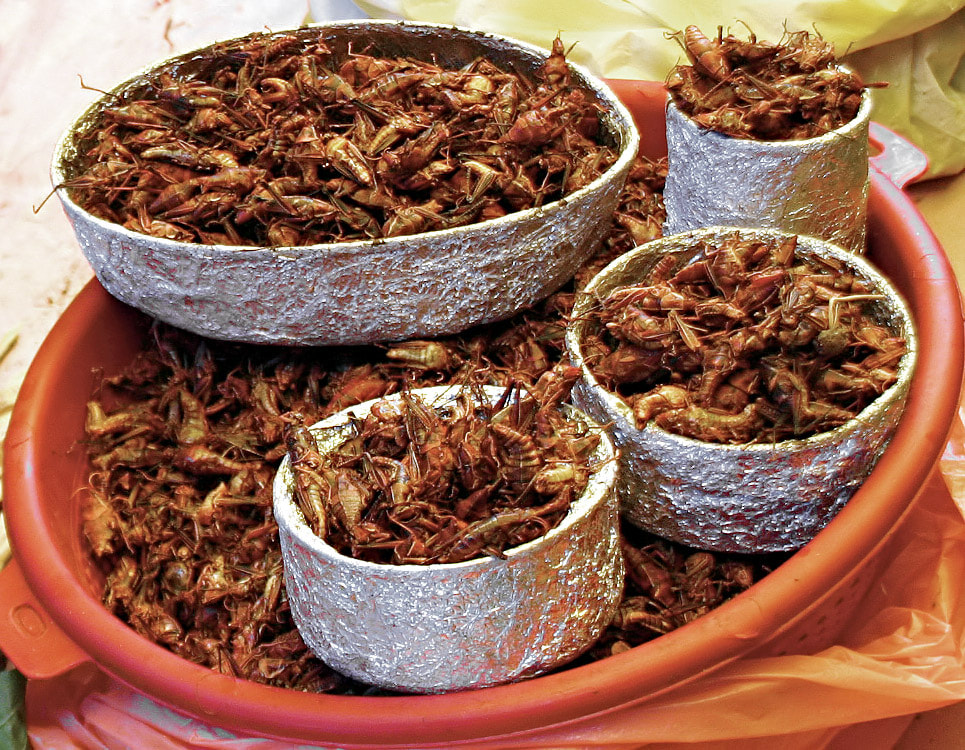
IELTS Practice Test Volume 4
- Đăng ngày: 04 Jun 2019
- Tests taken: 136,763
Đáp án
Part 1: Question 1 - 13
- 1 FALSE
- 2 TRUE
- 3 FALSE
- 4 NOT GIVEN
- 5 calcium
- 6 Thailand
- 7 indigenous Africans
- 8 mopane leaves
- 9 southern China
- 10 eight-legged arachnid
- 11 D
- 12 A
- 13 D
- 1 FALSE
- 2 TRUE
- 3 FALSE
- 4 NOT GIVEN
- 5 calcium
- 6 Thailand
- 7 indigenous Africans
- 8 mopane leaves
- 9 southern China
- 10 eight-legged arachnid
- 11 D
- 12 A
- 13 D
Part 2: Question 14 - 26
- 14 storage batteries
- 15 (the) voltage significantly
- 16 DC
- 17 expensive
- 18 20 B,D,E
- 21 C
- 22 B
- 23 A
- 24 A
- 25 B
- 26 C
- 14 storage batteries
- 15 (the) voltage significantly
- 16 DC
- 17 expensive
- 18 20 B,D,E
- 21 C
- 22 B
- 23 A
- 24 A
- 25 B
- 26 C
Part 3: Question 27 - 40
- 27 white dot
- 28 awkward conglomeration
- 29 enormous cost
- 30 ready-made
- 31 lateral velocity
- 32 solar arrays
- 33 Harmony (module)
- 34 hydrogen
- 35 Unity (module)
- 36 Zvezda (module)
- 37 chemical
- 38 tidal forces
- 39 pure oxygen
- 40 human isolation
- 27 white dot
- 28 awkward conglomeration
- 29 enormous cost
- 30 ready-made
- 31 lateral velocity
- 32 solar arrays
- 33 Harmony (module)
- 34 hydrogen
- 35 Unity (module)
- 36 Zvezda (module)
- 37 chemical
- 38 tidal forces
- 39 pure oxygen
- 40 human isolation
Leaderboard:
| # | Thành viên | Điểm | Thời gian | |
|---|---|---|---|---|
| Trang Nguyen |  | 9.0 | 15:13 | |
| Emmanuel Amedze |  | 9.0 | 16:27 | |
| Huy Đứm Qi |  | 9.0 | 19:12 | |
| 4 | Thao Phuong |  | 9.0 | 20:09 |
| 5 | Nguyễn Hải Hà |  | 9.0 | 22:50 |
| 6 | Kim Thanh |  | 9.0 | 24:28 |
| 7 | Kiệt Trần |  | 9.0 | 29:07 |
| 8 | Minh Nguyễn |  | 9.0 | 29:07 |
| 9 | Huy Mai Phuc |  | 9.0 | 31:52 |
| 10 | Tom_Dactin Nguyen |  | 8.5 | 36:49 |
Giải thích chi tiết
Questions 1-4
Do the following statements agree with the information given in Reading Passage One?
Write
| TRUE | if the statement agrees with the information |
| FALSE | if the statement contradicts the information |
| NOT GIVEN | If there is no information on this |
1 The French are well known for eating insects.
2 Peter Ferguson is a nature-friendly person.
3 Insect eating by people is a modern phenomenon.
4 Some insects are used for religious purposes.
- 1 Answer: FALSE
Keywords in Questions
Similar words in Passage
Q1: The French are well known for eating insects.
most famously by the French, who are otherwise not interested in garden life.
Note:
Question: The French are well known for eating insects.
Passage: the French are not interested in garden life.
For that reason, the answer is FALSE
- 2 Answer: TRUE
Keywords in Questions
Similar words in Passage
Q2: Peter Ferguson is a friendly person.
until I met a personally as well as ecologically-friendly young man, Peter Ferguson
Note: Considering every details in the question and in the passage, we can conclude that Q2 is confirmed in the passage.
For that reason, the answer is TRUE
- 3 Answer: FALSE
Keywords in Questions
Similar words in Passage
Q3: Insect eating by people is a modern phenomenon.
“Cooking insects well is recommended, and their consumption should, of course, be avoided, after intensive pesticide use or commercial spraying of local agricultural lands.”
Note
Question: Insect eating by people is a modern phenomenon.
Passage: Insects consumption should be avoided.
For that reason, the answer is FALSE
- 4 Answer: NOT GIVEN
Keywords in Questions
Q4: Some insects are used for religious purposes.
Note:
There is no similar words in the passage
So the answer is NOT GIVEN
Questions 5-10
Complete the table.
Choose NO MORE THAN TWO WORDS from the passage for each answer.
Insect | One Fact | Another Fact |
grasshoppers | contain 5 | popular in 6 |
mopane worms | primarily eaten by 7 | eat 8 |
scorpions | are popular in 9 | are a type of 10 |
- 5 Answer: calcium
Keywords in Questions
Similar words in Passage
From Q5 to Q10, we use a technique called scanning. As the question is choose words from the passage for the answer, we will scan the whole passage, looking for the keywords to find the location of the needed information.
Q5: Grasshoppers contain calcium.
When I remain skeptical, Peter holds up a fried grasshopper. ‘This has lots of calcium
Note:
Here we must find a noun, which grasshoppers contain.
The text "This has lots of calcium" shows us that "calcium" is the word we are looking for.
For that reason, the answer is calcium (1 word)
- 6 Answer: Thailand
Keywords in Questions
Similar words in Passage
Q6: Grasshoppers are popular in Thailand.
These same insects, incidentally, are commonly eaten in Thailand.
Note:
Here we must find a noun, where grasshoppers are popular.
The sentence "These same insects, incidentally, are commonly eaten in Thailand" shows us that "Thailand" is the word we are looking for.
For that reason, the answer is Thailand (1 word)
- 7 Answer: indigenous Africans
Keywords in Questions
Similar words in Passage
Q7: Mopane worms are primarily eaten by indigenous Africans.
The harvest and sale of wild mopane worms is now a multi-million dollar industry, feeding millions of people, mostly indigenous Africans.
Note: Here we must find a noun, which grasshoppers are primarily eaten by.
The sentence in the passage shows that the mopane worms is now feeding mostly indigenous Africans.
For that reason, the answer is indigenous Africans (2 words)
- 8 Answer: mopane leaves
Keywords in Questions
Similar words in Passage
Q8 Mopane worms eat mopane leaves.
Three kilograms of mopane leaves will feed a kilogram of worms—-a 30% payback’
Note: Here we must find a noun, which mopane worms eat.
The sentence in the passage shows that the mopane worms eat mopane leaves.
For that reason, the answer is mopane leaves (2 words)
- 9 Answer: southern China
Keywords in Questions
Similar words in Passage
Q9 Scorpions are popular southern China.
scorpions (a delicacy in southern China)”
Note: Here we must find a noun, where scorpions are popular.
According to the passage, scorpions is a delicacy or an expensive food in southern China.
For that reason, the answer is Southern China (2 words)
- 10 Answer: eight-legged arachnid
Keywords in Questions
Similar words in Passage
Q10. Scorpions are a type of eight-legged arachnids
We can extend this definition to our eight-legged arachnids (spiders and scorpions)
Note: Here we must find a noun, which scorpions are a type of.
According to the passage, scorpions is a type of eight-legged arachnids.
For that reason, the answer is eight-legged arachnids (2 words)
Questions 11-13
Choose the correct letter, A, B, C, or D.
Mopane worms
- A
- B
- C
- D
Keywords in Questions | Similar words in Passage |
Q11. Mopane worms | They can be eaten straight from the can, fried into crunchy snacks, or added as an ingredient to conventional dishes |
Note A. The author didn't mention anything about the name of mopane worms. B. "The moth form” is also not referred to in the passage. C. The content of C is also not mentioned in the passage. D. “Mopane worms are usually treated before being eaten’ means they can be eaten straight from the can, fried into crunchy snacks, or added as an ingredient to conventional dishes (as mentioned in the passage). For that reason, the answer is D. | |
Insects
- A
- B
- C
- D
Keywords in Questions | Similar words in Passage |
Q12. Insects | For a start, there are many insects, about 10 million species |
Note A. The author mention the number of insects “about 10 million species” anything about the name of mopane worms. B. There is no information indicated that the raw insects can be eaten. C. It is not mentioned about the safety of eating insects. D. There is no information about the greenhouse gas. Therefore, the answer is A. | |
The author
- A
- B
- C
- D
Keywords in Questions | Similar words in Passage |
Q13 The author | For example, most of those who eat rice (as 1 do) are inadvertently eating not just a few rice weevil larvae, and probably benefited by this, given the additional vitamins these larvae supply. |
Note A. The author didn't mention anything about his preference of snails. B. There is no information inferring that the author probably eats mopane worms. C. The content of C is also not mentioned in the passage. D. The text “most of those who eat rice (as I do) are inadvertently eating not just a few rice weevil larvae” means the author probably eats rice weevil larvae. Therefore, the answer is D. | |
Reading Passage 1
You should spend about 20 minutes on Questions 1-13, which are based on Reading Passage One.

If You Can Get Used to the Taste
There is a formal word for it: entomophagy. It means the consumption of insects by us, human beings. Okay, we are not insectivores (eaters of insects), although, it must be admitted, our primate cousins regularly feast on insects. Sure, but those relatives live in trees, and swing from branches, and we don’t. Okay, you say, snails, those slimy garden pests, are relished as a gourmet food, most famously by the French, who are otherwise not interested in garden life. But, I counter, snails are not insects. They are mollusks, and I’d like to think that makes a difference.
What I’m talking about is eating true insects, those with six legs, three body parts, hard exoskeleton, and two antennae. We can extend this definition to our eight-legged arachnids (spiders and scorpions), as well. These are creatures people just don’t eat. At least, that was what I thought, until I met a personally as well as ecologically-friendly young man, Peter Ferguson, who advocates insects as the ultimate in culinary delight. Why? Peter explains, ‘For a start, there are many insects, about 10 million species, and a huge biomass of high quality calories, and we just ignore them. In a world having trouble feeding itself, that doesn’t make sense.’
Ignore them we do, at least in Western culture, where we have long had much better alternatives. Animal husbandry has characterised our societies, giving us pork, poultry, and cattle, upon which we regularly feast. Yet other cultures don’t have it so lucky, in Africa, in Asia, and among aboriginal or ethnic groups in Oceania, insects have an equally long history as an important dietary supplement, from butterflies and moths, to bees and wasps, cockroaches and ants, beetle grubs or larvae, caterpillars and worms, scorpions (a delicacy in southern China) and tarantulas. Even the Christian Bible states that John the Baptist lived on locusts and wild honey, locusts being grasshoppers in their swarming stage. These same insects, incidentally, are commonly eaten in Thailand, where a visit to a market there will reveal multitudes, deep-fried in glistening piles for the delectation of passing shoppers.
Consider the African mopane worm, for example. To begin with, the name is a misnomer. The creature is actually a large colourful caterpillar, which, in the fullness of time, turns into a rather dull-looking moth, although most never reach that stage. The hairy yellow- striped creatures are eagerly sought after, hand-picked from trees in the wild, pinched by the tail-end to squeeze out the slimy green intestinal tract, after which they are most often sun-dried or smoked, thereafter ready for consumption. Tins of mopane worms in brine, or in tomato or chili sauce are common in supermarkets. They can be eaten straight from the can, fried into crunchy snacks, or added as an ingredient to conventional dishes. The harvest and sale of wild mopane worms is now a multi-million dollar industry, feeding millions of people, mostly indigenous Africans.
Peter is enthusiastically telling me why he does it. ‘Insects have protein, and all the vitamins, minerals, and fat you could want.’ When I remain skeptical, Peter holds up a fried grasshopper. ‘This has lots of calcium’. Then comes the (you guessed it) termite paste, a black smear with the look, smell, and consistency, of an industrial solvent. ‘Iron. Very rich.’ Then comes the grublike larvae of some form of moth. ‘Essential trace elements such as zinc and copper.’ Anything else? ‘Insects don’t produce greenhouse gases, and don’t need antibiotics.’ Peter even cites my mopane worm example. ‘Three kilograms of mopane leaves will feed a kilogram of worms—-a 30% payback. With cattle, it’s less than 10%. Insects are cheap to buy, cheap to breed, and easy to manage.’
One can’t argue with that. The phenomenal rate at which insects breed is well known, and more than makes up for their small size. A female cricket might be a fraction of the weight of a huge beef cow, but lays up to 1,500 eggs a month, converted into food at 20 times the rate of beef, whilst using only a fraction of the space and water. The ecological argument for entomophagy is undeniable, although there are significant concerns about internal parasites, and the accumulation of pesticides and toxins inside many wild insects. Allergic reactions have also been reported. Cooking insects well is recommended, and their consumption should, of course, be avoided, after intensive pesticide use or commercial spraying of local agricultural lands.
But what about the taste? Here, Peter hesitates. He finally comes out with a suspicious, ‘You get used to it.’ When I nod skeptically, he comes out with a far more confident, ‘Actually, you’re eating insects already, all the time.’ Yes, apparently, insects find their way into the human food chain, whether we like it or not. For example, most of those who eat rice (as I do) are inadvertently eating not just a few rice weevil larvae, and probably benefited by this, given the additional vitamins these larvae supply. Whole insects, insect parts, insect detritus, larvae, and excrement, appear in all our food, but in such small quantities that they are basically unnoticed and insignificant. Peter smiles. ‘In that sense, we’re already insectivores. We’ve just got to take the next logical step.’







